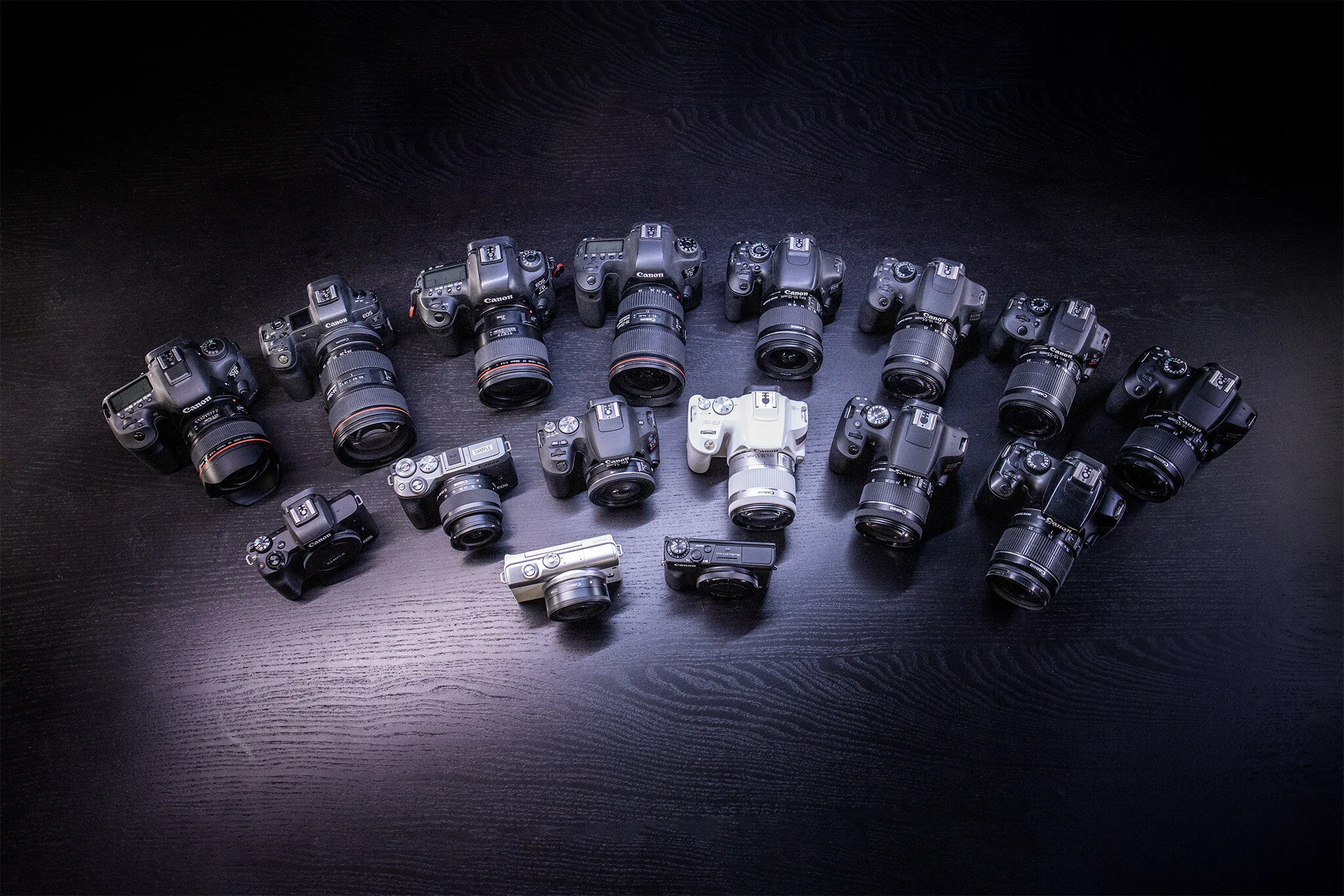The best camera model for bullet-time photography
TLTR: Canon SL1, SL2, SL3, t5i, t6i, t6s, t7i, t8i are the best options. Read below for the full details.
I’ve been in the bullet-time business since 2011, and currently own over 200 cameras. Most of my work since 2013 has been made using Canon SL1 cameras. I know this model pretty well. Most of my clients are using SL2, t6i, t7, etc. Recently, as our software sales exploded, we started to see some amazing results, but also some average ones (triggering issues). I knew that the more affordable ones were a bit trickier to use, but to really understand what was happening, I purchased 6x T6 (1300d) and 12x T7 (1500d/2000d). This is what lead me to write this document and add the two new compensation modes in Xangle Camera Server.
What I’m looking for exactly?
Good image quality
Good trigger precision
Small size
Decent price
Availability
Based on these criteria, the best models are the SL2/200d and SL3/250d/200dii. The SL1/100d is also an amazing option, and I still have 180 units of those, but they are getting old and hard to find. The SL2/200d is the current workhorse for my high end clients and has been proven highly efficient on large scale installations.
The SL3/250d/200dii is quite new and has not been tested in a large scale installation by us or by any of our clients. But based on our usual tests with two units, we got a precision like never before, either with or without the mirror lockup activated. This is highly promising, and I’m eager to put my hand on more units to see how good they are.
Models like the T6i/750d and T7i/800d are also great options but they are a bit more bulky
Full frame cameras like the 5d, 6d and 1dx series are working perfectly on paper, but as far as I know, no one has ever built large scale bullet-time kits using these models.
More affordable models like the T6/1300d and T7/1500d/2000d/4000d are ok, but they’re not as accurate with the triggering because they don’t have the mirror lockup function. That being said, there are tricks to get great shots with those models, but you’ll need an additional flash trigger to delay your strobe. I’ll explain this in depth in another video.
The cheapest actual Canon model is the t100/4000d, but this one can not be powered by an external source.
Newer cameras like the m50, m200 and M6 mark ii are looking very promising, but the triggering is totally off. There’s a workaround on the m6 by using Esper triggers as this model has a regular trigger port, which is not the case for the m50 or the m200. We tested with two units and the analog trigger accuracy looks ok.
Eos-R is rarely an option due to its higher price, but we tested it anyway and got amazing results with absolute perfect trigger precision
The G7x Mark III is a totally different story. I really want this camera to work. It’s very special as it’s super small, and it has the capability of being powered and sending data using a single usb cable. It is not accurate enough to freeze the subject, but it can do pretty good interval shooting and that would be enough for me on a portable kit. This one also has the advantage of having a controllable zoom straight from Xangle. Magic!
Test session: SL1 vs SL2 vs SL3. To our big surprise, the SL3 is drastically more accurate. However, it triggers 10ms later than the SL1 and SL2. That answers the question to everyone who asked me if it was possible to mix SL2 and SL3 (as they share a very similar sensor)
